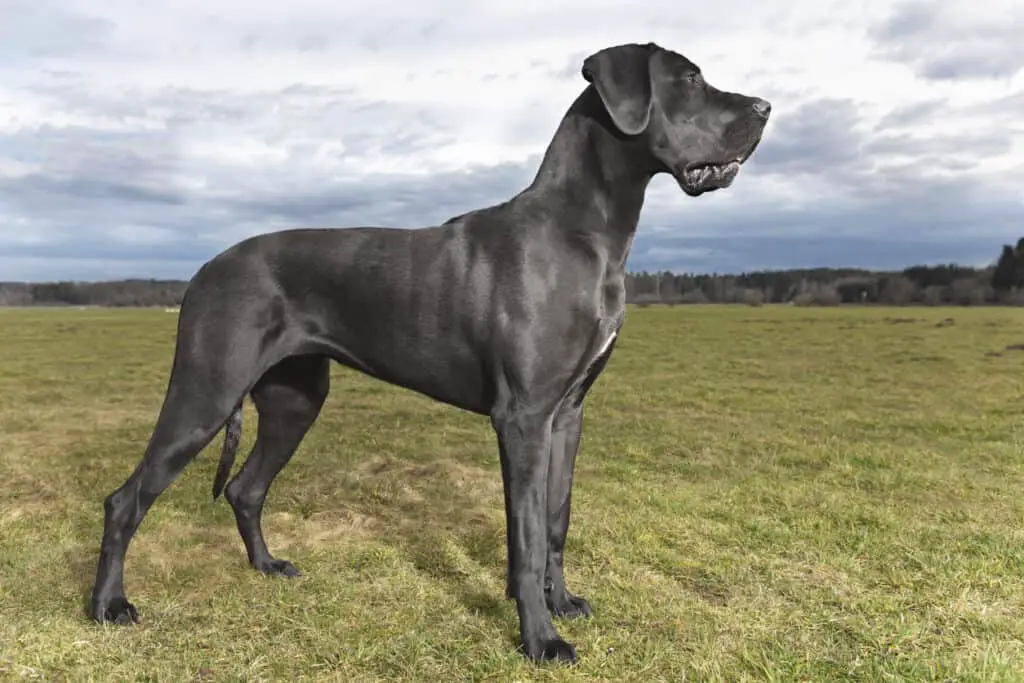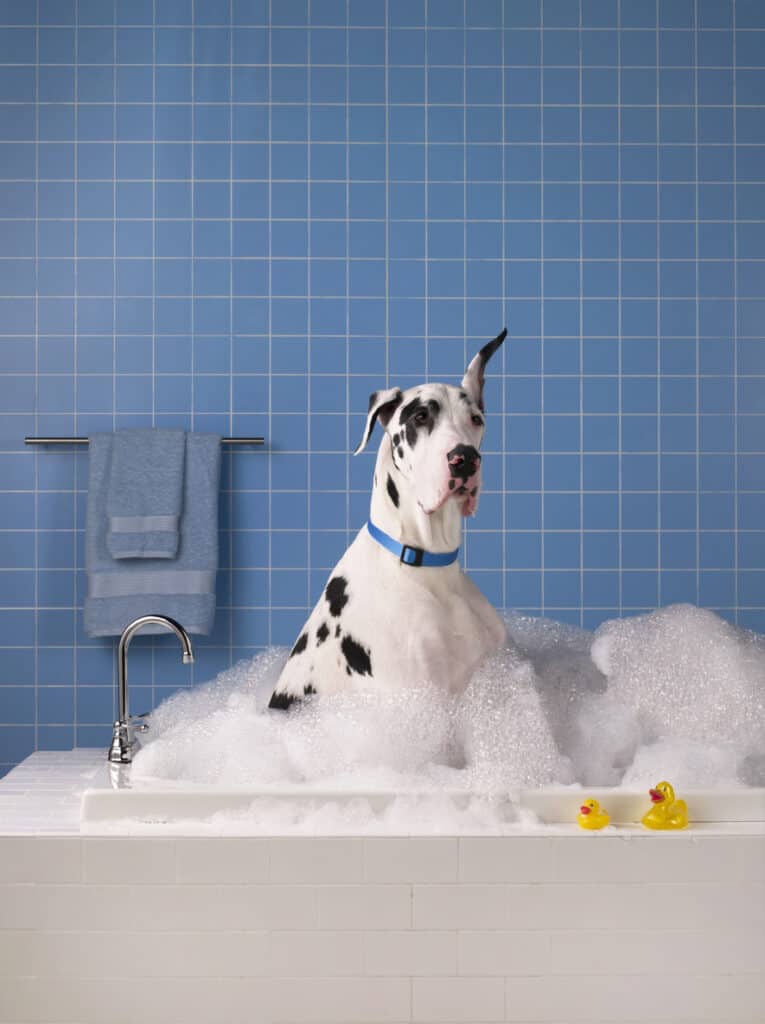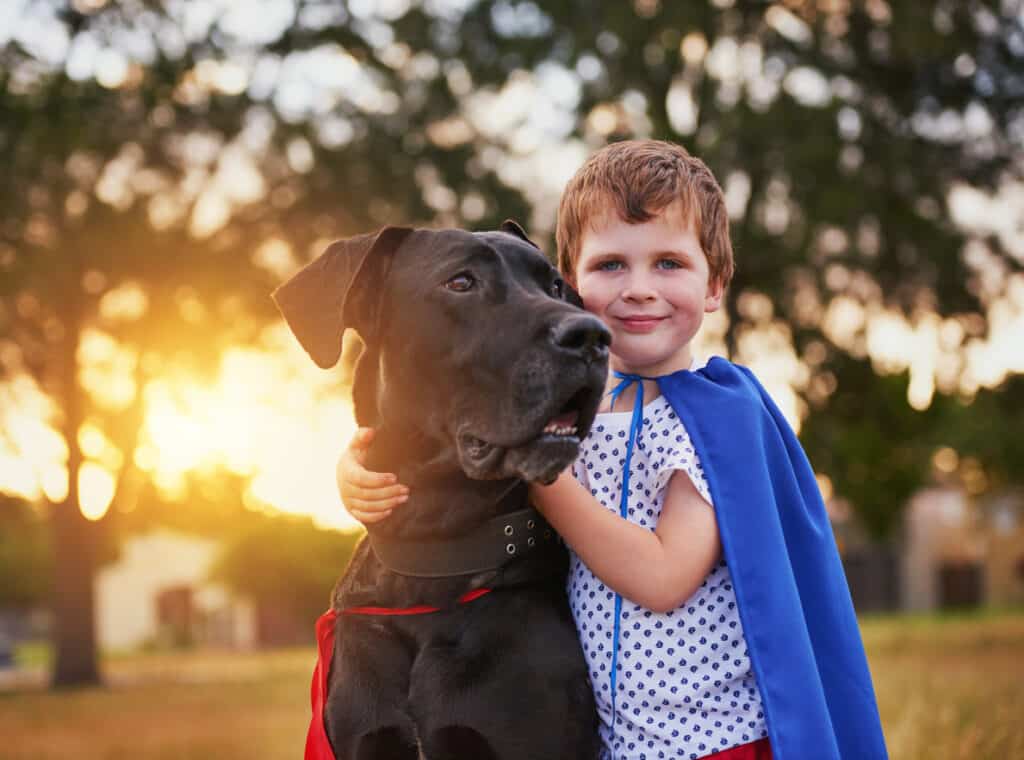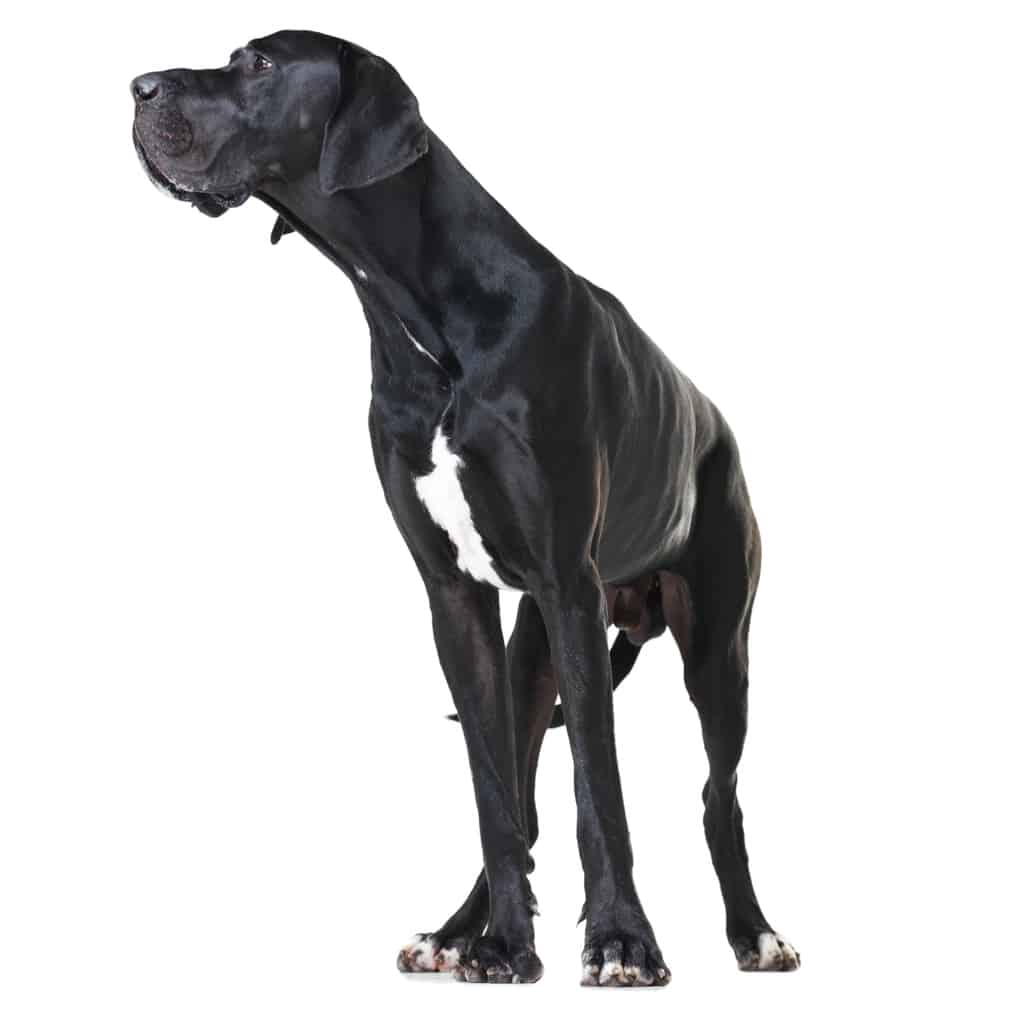The short answer is yes, Great Danes do shed. However, they do not shed to the degree that other breeds do. Great Danes have what is known as a single fur coat, meaning that there are no layers to it. Double fur coats are dense and layered, resulting in much more shedding than dogs with single fur coats. Great Dane fur is short and fine and will require regular care, but grooming need not be intensive where maintaining the coat is involved.
Where grooming does become a little more intensive is around nail clipping, ear cleaning, and toothbrushing, but for now, let’s take a closer look at the degree to which Great Danes shed, as well as how to manage it.

Great Danes are not huge shedders, but they are huge animals. This means that even though they do not shed to the extent that many smaller long-haired dogs or animals do, it is essential to create a grooming routine involving the brushing of your Great Dane’s coat. Great Danes are considered moderate shedders who “blow” (completely shed) their fur once a year. Great Danes shed their fur in the springtime, however their size can leave owners feelings as though they are in fact major shedders year-round.
It can be helpful to understand what purpose all that Great Dane fur serves. For starters, it helps the animal regulate its body temperature, as well as provide skin protection from external elements. Every hair on every dog’s coat, regardless of whether it is a single-coated dog or a double-coated dog, will go through the same life cycle stages of fur:
- Anagen phase (new hair is actively growing)
- Catagen phase (hair has completed its growth)
- Telogen phase (the hair is dormant, neither growing nor preparing to fall out)
- Exogen phase (the end of the hair lifecycle, at which point it falls out)
If you think that your Great Dane is shedding excessively, be sure to consult your veterinarian. Excessive shedding may indicate that your Great Dane is suffering from underlying heath issues, such as low thyroid function. In fact, hair loss and diet are often related, so even if you’re pretty sure your Great Dane is just leaving hair all over the place because it’s huge, it never hurts to ask. Great Danes can also be impacted by stress, the result of which may be an increase in shedding.
How to Groom a Shedding Great Dane

Grooming your Great Dane’s coat is a task best undertaken outside do the fact that you will be relieving the animal of loose or dead hairs. However, if you do not have an exterior available to you, you can also prepare the area around your Great Dane by clearing it of any nearby items to which the fur might stick and having a vacuum or broom on hand to clean up after.
Think back to a time when you got a massage, or somebody was running their fingers through your hair. The memory should elicit positive associations and a relaxed feeling, and Great Dane owners should strive to create these associations and feelings for their Great Dane during grooming time.
On one hand, this is practical because attempting to chase a Great Dane around with a brush would be both highly ineffective and likely degrading to your status as a leader in the house. So, early on, it’s important that grooming be introduced into your Great Dane puppy’s routine, both so that grooming is easy and relaxing for both parties, but also because grooming is one of the oldest ways that animals communicate their care for one another. Grooming also strengthens bonds.
Brushing a Great Dane

In order to raise a Great Dane that is comfortable with being brushed, you should first ensure that it is comfortable being touched all over, preferably by as many different people as possible. Encourage everyone in your household and people who meet your Great Dane to gently pet and scratch all over its body. This also functions as a supervised way of learning whether there are any areas of your Great Dane’s body that it is particularly sensitive about.
Additionally, teaching a Great Dane to be comfortable with being touched all over will prepare it for a host of experiences that it will need to endure throughout its life, such as going to the veterinarian for checkups and being patted by excited children. Introducing lots of touch early on will simulate the effect of a brush, which can be introduced during a quiet teaching moment when there are no distractions.
Another important aspect of successfully introducing a grooming routine into the life of your Great Dane puppy is to set it up for success. In this case, setting a puppy up for success looks like getting it good and tired out before you try to make it sit still for a grooming session. Bear in mind that Great Dane puppies and dogs have extremely sensitive stomachs, so you will want to plan your play session well in between meals so as to ensure not to upset the stomach. After your Great Dane puppy has worked out some of its energy, you can expect it to be easier for it to adhere to your expectations during a grooming session.
To properly brush your Great Dane, you will want to begin from near its head. Make long strokes roughly parallel to their body, and slowly work your way down. This is usually easiest to do if your Great Dane is sitting, which also provides an opportunity for you to work a short obedience session into an already-bonding session. As you brush your Great Dane, be mindful that you’re not pressing too hard as their coat is very short and their skin is sensitive. Pay attention to the Dane’s body behavior, which can easily communicate discomfort. If your Great Dane has been properly conditioned to receive a good grooming, it should be relatively still and calm, perhaps even visibly enjoying the attention
An important factor to consider when establishing a grooming routine with your Great Dane is the type of brush to use. When choosing what sort of brush to use on your Great Dane, it’s important to consider that there are different types of brushes for different hair types (much like humans).
For example, a pet brush designed for short, fine hairs might have little rubber tips on the teeth, whereas brushes that are better suited to longer fur will likely have short wires close together. These little rubber tips facilitate the dissemination of the Great Dane’s natural oils, which contribute to an overall shiny, healthy-looking coat. The Great Dane’s coat is also very short, making the soft rubber prongs ideal for running over its body without causing any sort of aggravation.
While it is also important to introduce your Great Dane puppy to baths and water early on, owners should be aware that when seeking to reduce the amount of shedding, a simple grooming procedure with a brush will yield much better results than a bath. Contrary to brushing, bathing strips the natural oils from a Great Dane’s fur, which can inhibit a healthy coat an even cause excessive dryness.
How Often Should I Brush my Great Dane?
Because the Great Dane has such a short coat, bathing is not typically necessary more than once a month or even every several weeks unless the puppy or dog has gotten itself into something really smelly. Additionally, Great Danes are susceptible to dry or flaky skin, which can be exacerbated by too many unnecessary baths. When you do bathe your Great Dane, you can help promote its coat health by choosing a well-reviewed shampoo for dogs with short, fine fur.
Once your Great Dane puppy is used to being brushed, it’s time to make it an official part of the routine. The grooming routine of a Great Dane does not need to be long. In fact, just two to five minutes of brushing a couple of times a week is normally sufficient to maintain a healthy coat and also avoid frequent vacuuming. (Although, it should be noted that whenever animals are involved, the frequency of vacuuming typically increases, particularly if the size ratio of the living environment to the animal is small-to-large.)
Another minor aspect prospective owners may want to consider when considering the question of “Do Great Danes shed?” is to think about the colors in your home. If you have a lot of white or light colors, a black Great Dane will probably have you dragging out the vacuum more frequently than a fawn or less-contrasting coat.
Around the same time that you’re teaching your Great Dane puppy to get used to being brushed is a great time to introduce other essential elements of a Great Dane’s grooming routine. These elements include nail clipping and ear cleaning, both of which become more challenging to introduce the older a Great Dane becomes. Much in the same way you acclimated your Great Dane to being brushed, you will want to do the same with regard to regularly and gently handling paws and ears so that your Great Dane can have an overall positive grooming experience.
Although Great Danes do not shed nearly as much compared to other breeds, their affectionate nature could still leave you covered in fur. This is because Great Danes love to be close to their humans, so much so that they will often try to climb into laps! They also love to lean against legs and receive scratches, which is a natural way to release loose and dead fur –all over your pants.
Which Seasons do Great Danes Shed the Most?
Like most animals, Great Danes tend to shed more when the seasons are changing. In particular, the transition from winter to spring may leave your home slightly furrier than usual, but by increasing the amount of brushing you give your Great Dane by just one per week, you can generally mitigate the increase in shedding. Another option is to purchase machine washable covers for your furniture, which is also good practice if you let your Great Dane up on furniture. The affectionate nature of a Great Dane should not be a deterrent for those considering the breed. Their short coat is overall easily managed, and it is generally straightforward to get them to associate brushing with feelings equivalent to a relaxing spa session. For owners wishing to be proactive about their Great Dane’s coat health, in addition to brushing the dog one to two times a week, an Omega 3 supplement may also be beneficial. Consult with your veterinarian to determine the right elements to incorporate into your Great Dane’s grooming routine and overall coat health.


